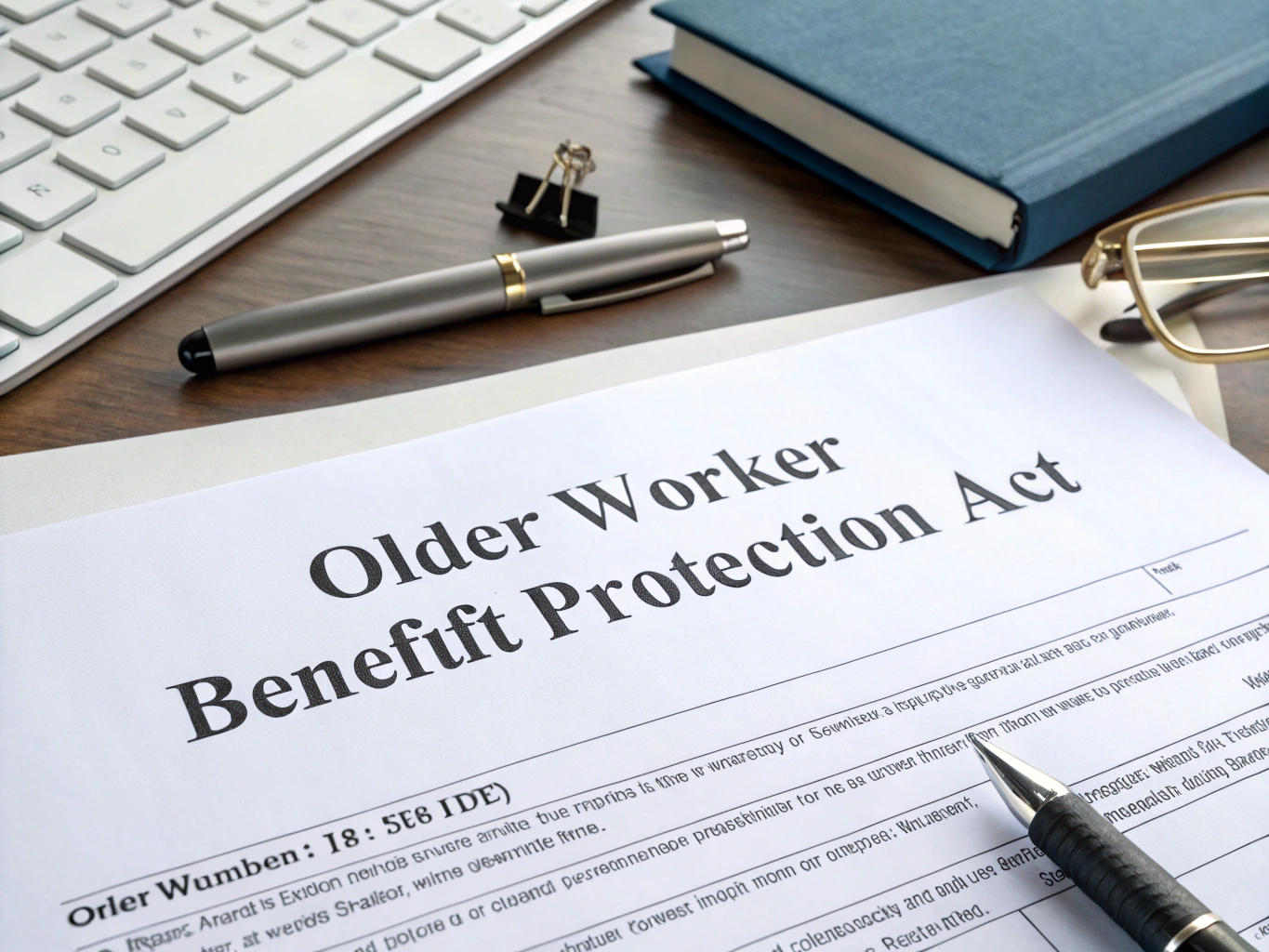What is an Older Worker Benefit Protection Act (OWBPA) Waiver?
The Older Worker Benefit Protection Act (OWBPA) Waiver is a critical document used in HR processes specifically designed to protect the rights of older employees when they agree to waive certain rights, particularly those related to age discrimination. This waiver is commonly utilized during situations such as layoffs, early retirement offers, or significant changes in employee benefits. By ensuring that employees fully understand what they are waiving, employers can comply with legal requirements while fostering trust and transparency within the workplace.
Template
Below is a template you can customize for your organization’s needs:
Older Worker Benefit Protection Act (OWBPA) Waiver and Release Agreement
1. IntroductionThis Waiver and Release Agreement (“Agreement”) is made between [Employee’s Name] (“Employee”) and [Company’s Name] (“Company”). 2. Consideration
In exchange for signing this Agreement and complying with its terms, the Employee will receive the following benefits: [List the benefits, such as severance pay, extended health benefits, etc.]. 3. Acknowledgment of Age Discrimination in Employment Act (ADEA) Rights
The Employee acknowledges that they are waiving rights or claims under the Age Discrimination in Employment Act (ADEA), which prohibits age discrimination in employment. 4. Time to Consider
The Employee has been given [21/45] days to consider this Agreement. The Employee is advised to consult with an attorney before signing this Agreement. 5. Revocation Period
The Employee has the right to revoke this Agreement within 7 days of signing it. To revoke, the Employee must provide written notice to [Company’s Contact Person] at [Company’s Address]. 6. Knowing and Voluntary Waiver
The Employee acknowledges that they:
Have read and understand this Agreement.
Are signing this Agreement voluntarily and without coercion.
Have not relied on any representations or statements not set forth in this Agreement. 7. Release of Claims
The Employee releases the Company from all claims, demands, and causes of action, known or unknown, arising out of or related to the Employee’s employment with the Company, including but not limited to claims under the ADEA. 8. Governing Law
This Agreement shall be governed by and construed in accordance with the laws of [State/Country]. 9. Entire Agreement
This Agreement constitutes the entire agreement between the parties and supersedes all prior agreements and understandings, whether written or oral, relating to the subject matter of this Agreement. 10. Signature
By signing below, the Employee acknowledges that they have read and understand this Agreement and agree to its terms.
Employee’s Signature:
______________________
Date:
______________________
Company’s Representative Signature:
______________________
Date:
______________________
Purpose and Benefits
The purpose of the OWBPA Waiver is to ensure that older workers are fully informed before waiving their rights regarding age discrimination claims. This is vital for maintaining transparency and fairness in the workplace. Here are some of the key benefits of utilizing this form:
- Legal Protection: By using a proper OWBPA Waiver, organizations can safeguard against potential legal disputes related to age discrimination.
- Clarity for Employees: The waiver ensures that employees understand their rights and the implications of waiving them, promoting informed decision-making.
- Structured Process: Utilizing a standardized waiver form creates consistency in how waivers are handled across the organization.
- Trust Building: By clearly communicating the terms and encouraging legal consultation, employers foster trust with their older workforce.
- Compliance with Regulations: Adhering to the OWBPA requirements helps companies stay compliant with federal laws, reducing the risk of penalties.
Essential Components
Each OWBPA Waiver should contain several critical components to ensure it is legally sound and effective. Here are essential elements to include:
- Employee Acknowledgment: The employee must acknowledge their understanding of waiving ADEA rights to ensure they are aware of what they are giving up.
- Time to Consider: Providing a specific period for the employee to review the agreement protects their rights and promotes informed consent.
- Revocation Clause: Allowing a revocation period ensures that employees have the chance to reconsider their decision after signing.
- Legal Consultation Recommendation: Advising employees to seek legal advice before signing reinforces their understanding and protects the company legally.
- Release of Claims: Clearly stating the release of all claims related to employment ensures clarity on what the waiver covers.
How to Use This Form
Implementing the OWBPA Waiver effectively involves several steps. Here are some practical tips for using this form correctly:
- Customize the Template: Tailor the template to reflect your company’s specific policies and procedures, ensuring all relevant information is accurately represented.
- Inform Employees: When presenting the waiver, provide a clear explanation of its purpose and importance to facilitate understanding.
- Set a Clear Timeline: Clearly communicate the time frame for consideration and the revocation period to prevent confusion.
- Document the Process: Keep detailed records of the waivers signed, including dates of signature and any related correspondence.
- Provide Support: Offer resources or contacts for employees who may have questions or need assistance understanding the waiver.
Legal and Compliance Considerations
When dealing with OWBPA Waivers, it is essential to stay informed about relevant laws and regulations. Ensure that all waivers are:
- In Writing: The OWBPA requires that waivers must be documented in writing to be enforceable.
- Clear and Understandable: Use plain language to make sure employees can easily comprehend the terms.
- Specific to ADEA: The waiver must reference claims under the Age Discrimination in Employment Act to be valid.
- Non-Discriminatory: Ensure that the waiver process does not discriminate against older employees and is applied uniformly.
Best Practices
To maximize the effectiveness of your OWBPA Waiver, consider the following best practices:
- Training for HR Staff: Ensure that HR professionals are trained in the nuances of the OWBPA to facilitate proper implementation.
- Regular Review of Policies: Periodically review and update waiver policies to comply with evolving laws and best practices.
- Encouraging Open Dialogue: Create an environment where employees feel comfortable discussing their concerns regarding the waiver.
- Seek Legal Counsel: Consult with legal experts when drafting or revising the waiver to ensure compliance and clarity.




